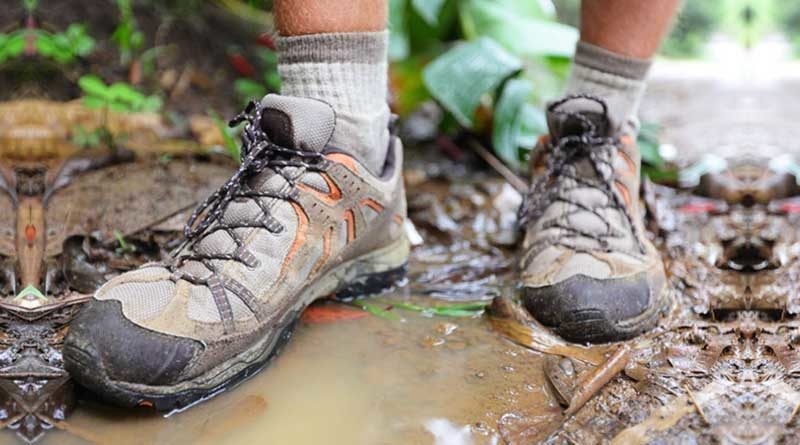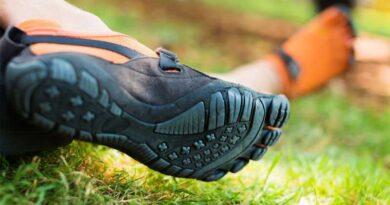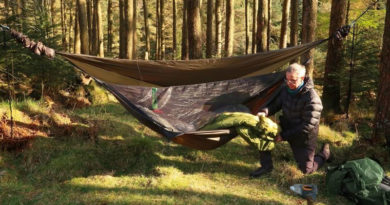How To Keep Boots Dry When Hiking In The Rain?
Hiking in the rain is fun. Some people like myself, like water. But hiking in the rain means that you have to stay dry. This is where many people make a common mistake. They focus too much on keeping their upper body and clothes dry that they forget about their boots or they just ignore them. Keeping your boots or shoes dry is very important while hiking in the rain. You should take the necessary steps to keep your feet dry.
Reasons to Keep your Boots Dry
Your boots are as important as your clothes. Do not undermine your boots. Keep them dry. Following are the reasons why you would want to keep your boots dry.
Durability Issues
Hiking boots aren’t cheap, except for the cheap ones, in which case, they won’t last long enough anyway. But if you have premium or mid-range hiking boots, they are an investment. Protecting your investment is important.
If hiking boots or shoes continuously stay wet, their leather, mesh, and cloth shells begin to erode. Continuous wet conditions also weaken the seams and stitching on the boots eventually causing the outsoles to rip off.
The ripping-off often happens at the worse time, that is, in the middle of the hike. At this point, you either abort your hiking trip or suffer physically and mentally. Physically because broken boots can’t protect your feet. Mentally because now you have thoughts of losing your favorite pair and have to spend on new ones.
Hiking boot shells also develop molds and fungi which erode the boots even faster and produce a very bad smell. If you forget to clean them for a long time, then you might have to discard your boots altogether.
Infections
Remember the molds and fungus mentioned above? Your boots aren’t the only ones to get them. These molds and fungi can also cause infections on your feet. If you keep your feet in wet boots for 6 to 7 hours, you are at a higher risk of developing a fungal infection.
Along with fungal infections, you can also develop various types of bacterial infections. Moisture is a breeding ground for microorganisms. New boots require a break-in period. During this break-in period, boots are uncomfortable and cause blisters and sores. If your boots stay wet for a long period, they can cause bacterial infections in these blisters and sores. It can also happen because of uncomfortable boots or if you have a wounded foot.
It is important to keep your boots dry to avoid fungal and bacterial infections.
Heavy Boots
Hiking boots are already heavy. But when they get saturated, they become even heavier. Heavier boots are tiring to walk with. They will start making your feet hurt quicker and you won’t be able to walk for long distances with them.
Keeping your Boots Dry
Here are a few ways to keep your boots dry in the rain.
Waterproof Boots
The most efficient way to keep your boots dry is to get waterproof boots. But there is a catch:
- Waterproof Hiking Boots: These boots are made of rubber, plastic, or non-porous materials. You can wear these boots in snow and shallow water. These boots are meant to completely keep the water out and are not affected by prolonged wet conditions. But they are not common boots. Usually, such boots are specialized boots.
- Water-resistant Hiking Boots: These boots are made of materials that are known to repel water, like leather. Some have water-resistant coatings like Gore-Tex which allow them to stay dry for longer periods. These boots will stay dry in light showers but only for a short period. One trade-off of water-resistant coatings like Gore-Tex is that they make the boots unbreathable.
It is important to note that most boots on the market are from the second category but they are marketed as waterproof. The term “waterproof” is misleading for hiking boots.
Water-Resistant Treatments
Water-resistant and Gore-Tex boots are expensive and not everyone buys them. But you can apply water-resistant treatments to your boots to make them resist water. You can apply water-resistant treatment to your boots in the following steps:
- Understanding the material of the boot: It is important to understand the material of your hiking boots. That will allow you to choose adequate products for your boots like waxes, sprays, and other products. Hiking boots are usually made of suede, nubuck, or full-grain leather.
- Clean your Boots: Once you have identified the material of your boots and chosen a product accordingly, you have to clean your boots of any dirt and debris. You can use a damp cloth or a brush to do so. It is better to read the manufacturer’s guidelines on maintaining the boots.
- Apply water-resistant treatment: After you have cleaned up your boots, apply the water-resistant product on the boot according to the product manufacturer’s guidelines. These guidelines are often printed on the container of the product.
Gaiters
Gaiters are a nice way to keep your boots dry. They not only protect your boots but also your lower legs preventing water from entering your boots from above. Gaiters can protect most of your boots in the rain. The only exposed part is the tip of your boots. Besides, gaiters are recommended when hiking in the rainy season anyway.
Boot Covers
River crossing covers are another way to protect your boots from getting wet in the rain. These covers can go up to your knees. The problem with these covers is that you have to know if the trail you will be hiking allows them. These covers reduce boot grip so they are not for muddy and slippery trails. They are best for rocks and hard surfaces.
Final Thoughts
Keeping your boots dry in the rain is as important as keeping your clothes dry. A good pair of boots is an investment and you should protect your boots. Prolonged wet periods can cause durability issues causing your boot to break down quickly. They also put you at risk of developing fungal and bacterial infections.
Get water-resistant boots. Keep in mind that water-resistant boots are falsely advertised as waterproof boots. Don’t fall for that. But water-resistant boots can be expensive, in which case, you can turn normal hiking boots into water-resistant hiking boots through water-resistant treatments. Other methods to keep your boots dry are using gaiters and river crossing covers. River crossing covers reduce boot grip so they can’t be used in slippery and muddy areas.




